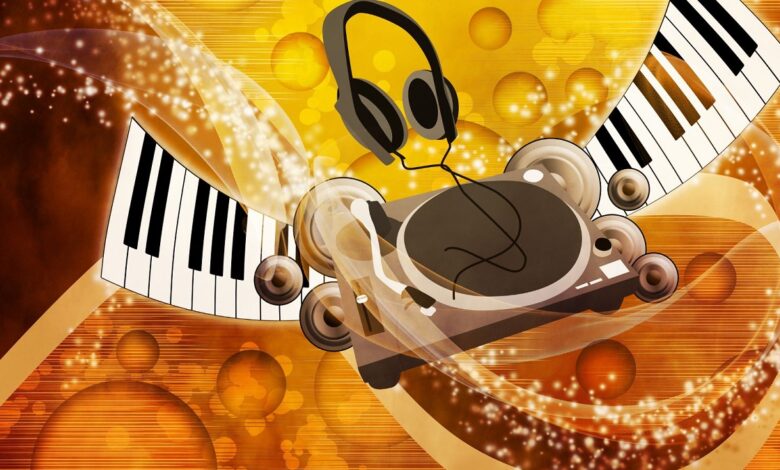The Rhythmic Heart of Pulsamento: Exploring the Essence of a Musical Phenomenon

Introduction:
In the immense scene of music, there exist different types, styles, and strategies that spellbind crowds all over the planet. Among these, one term that has acquired noticeable quality lately is “pulsamento.” This cadenced peculiarity rises above limits, winding around its way through various societies and melodic practices. Making a permanent imprint on the hearts of audience members. In this article, we dig into the quintessence of pulsamento, investigating its starting points, importance, and effect on the universe of music.
Defining Pulsamento:
Pulsamento, got from the Italian word “pulsare” signifying “to throb” or “to beat,” is a melodic term that depicts an unmistakable musical quality. Not at all like a severe metronomic beat, pulsamento conveys a dynamic and expressive heartbeat. Taking into consideration a more nuanced and emotive melodic experience. It tends to be tracked down in different types, from old style to society, and has been embraced by performers looking to implant their structures with a feeling of essentialness and enthusiasm.
Historical Roots:
To comprehend the foundations of pulsamento, we should dig into the historical backdrop of music. This cadenced idea has profound associations with early types of music, where percussion instruments and the human voice assumed a focal part. Antiquated civilizations used throbbing rhythms in customs, services, and narrating, establishing the groundwork for the expressive heartbeat we perceive as pulsamento today.
In old style music, the Florid time frame saw a flood in the utilization of expressive mood. Writers like Johann Sebastian Bach and George Frideric Handel consolidated pulsamento into their structures, making a musical essentialness that reverberates as the centuries progressed. The utilization of terraced elements, where the volume changes unexpectedly, further underlined the expressive throbs inside the music.
Pulsamento in World Music:
In conventional society music, particularly in locales like the Balkans, pulsamento takes on an energetic and enthusiastic person. String instruments, like the violin and the tamburitza, are frequently played with an articulated throbbing cadence, making an irresistible enthusiasm that is both celebratory and suggestive.
In Latin American music, pulsamento appears in different structures, from the cadenced beats of the Afro-Cuban clave to the exuberant dance rhythms of salsa and tango. The guitar, a conspicuous instrument in numerous Latin American sorts, frequently utilizes pulsamento to convey the energy and power intrinsic in the music.
Pulsamento in Contemporary Music:
The development of music in the twentieth century carried new aspects to pulsamento. Particularly with the rise of jazz and famous music kinds. Jazz, with its improvisational nature, permitted artists to explore different avenues regarding throbbing rhythms. Bringing forth off-timing and swung rhythms that became vital to the class.
In contemporary famous music, pulsamento can be heard across a range of styles, from rock and pop to electronic and hip-bounce. Makers and performers utilize cadenced subtleties to make dynamic and connecting with structures. The beat turns into an imperative component in electronic dance music (EDM). Where throbbing beats drive the energy of the music and interface with crowds on an instinctive level.
Expressive Techniques:
One of the vital parts of pulsamento lies in the expressive strategies utilized by performers. String instruments, wind instruments, and percussion instruments can all add to the throbbing mood in remarkable ways. Methods like staccato enunciation, dynamic expands, and cadenced accents are utilized to upgrade the pulsamento impact. Making a feeling of recurring pattern inside the music.
In vocal music, artists use pulsamento to convey feeling and feature specific expressions. The normal ascent and fall of the human voice loan themselves well to this musical method, permitting vocalists to draw in with their crowd on a significant level.
Impact on Audience:
The throbbing beat of music significantly affects the audience. It can bring out feelings, make a feeling of expectation, and lay out an association between the performer and the crowd. In live exhibitions, the pulsamento can be felt in the aggregate heartbeat of the group. Making a common encounter that rises above language and social hindrances.
Besides, the unique idea of pulsamento adds a layer of intricacy and interest to the music. It forestalls tedium, keeping the audience drew in and anxious to find the musical exciting bends in the road inside an organization. Whether in an old style ensemble or a contemporary pop tune. Pulsamento has the ability to change a piece of music from a simple hear-able experience to an instinctive excursion.
Conclusion:
In the embroidery of melodic articulation, pulsamento arises as a cadenced heartbeat that resounds across classifications and societies. From its foundations in old customs to its contemporary appearances in famous music. Pulsamento encapsulates the substance of cadenced essentialness and expressive heartbeat. As performers proceed to investigate and develop. The throbbing beat will without a doubt stay an immortal and vital component in the rich embroidery of melodic articulation. Associating all of us through the widespread language of mood.




